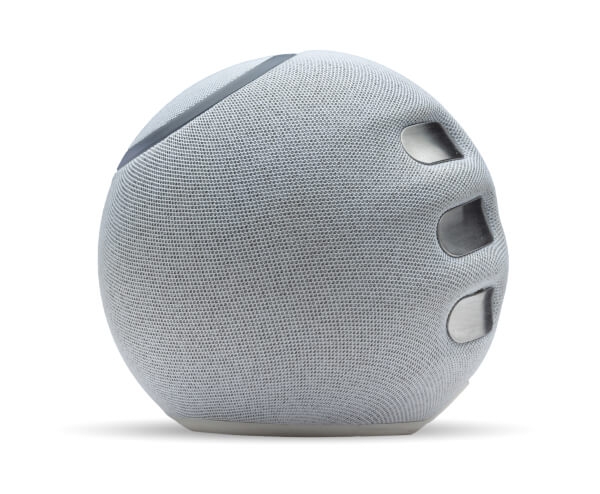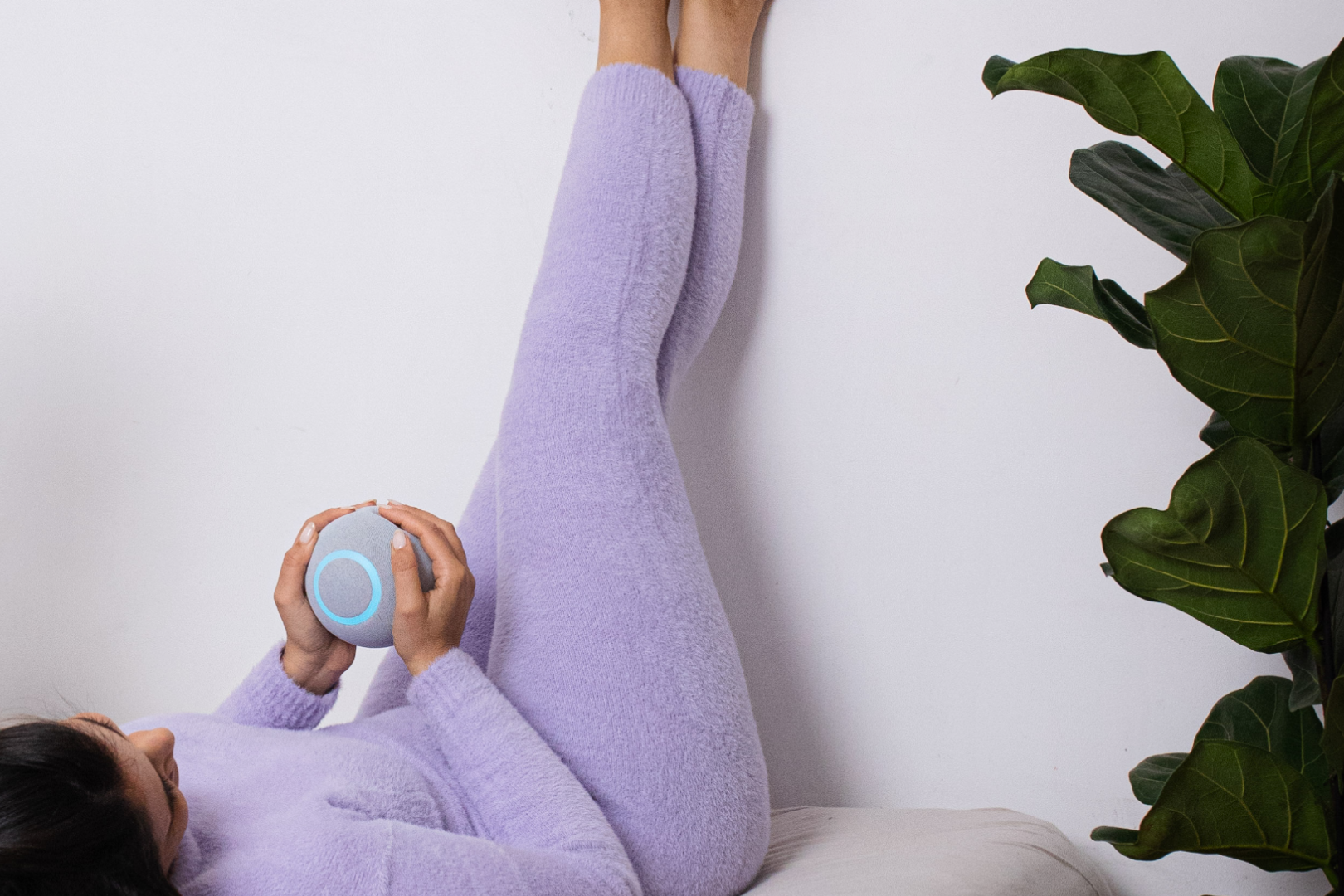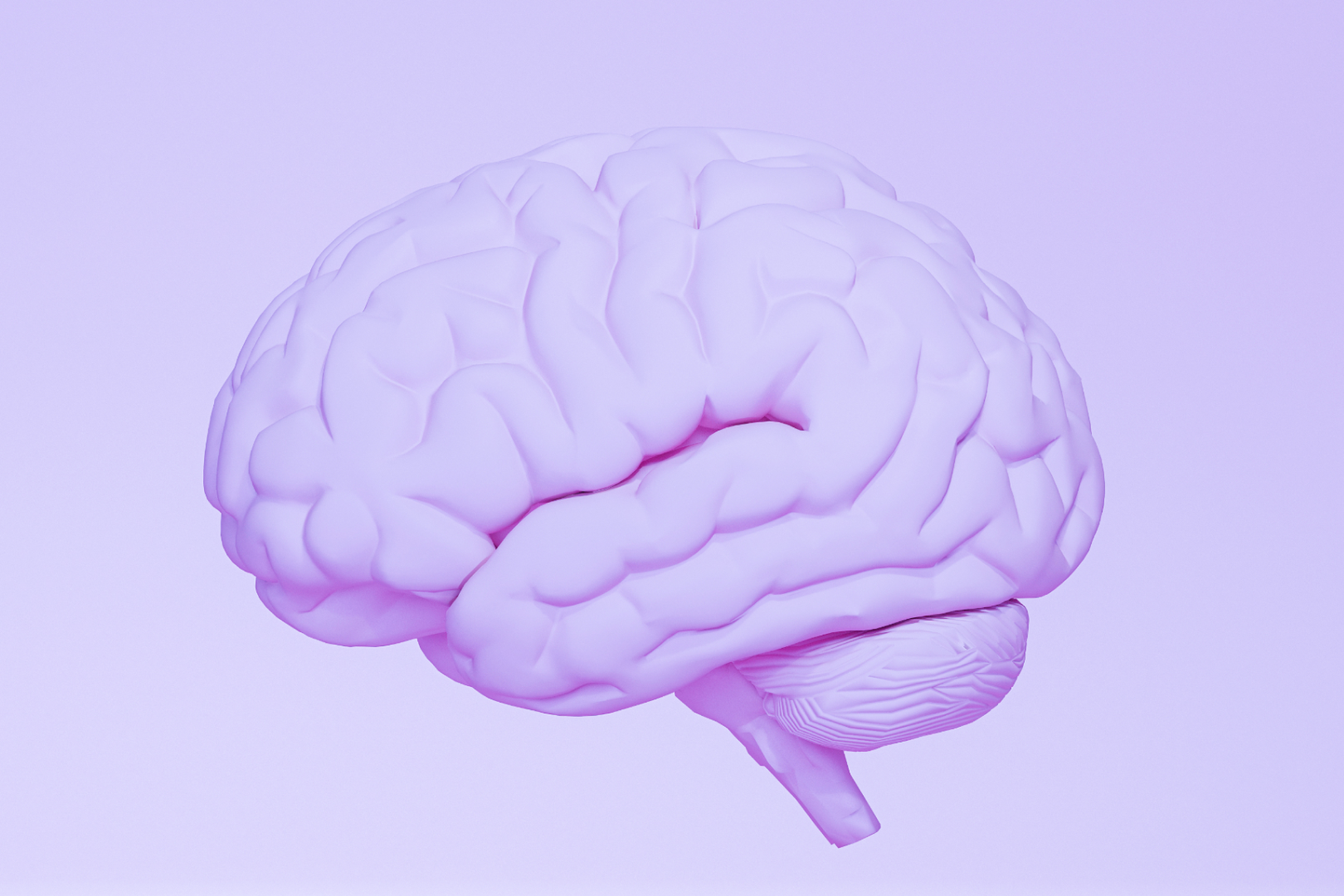People everywhere are deciding to practice meditation. According to the CDC, nearly 15% of Americans have tried meditation in the last year, and the number continues to rise.
If you’re one of those people and you’re ready to give meditation a go: Congratulations! Meditation is an ancient and universal practice with many benefits for the mind and body. Making the decision to meditate and incorporate meditation into your routine can be a big step toward a new level of well-being. A
s a meditation newbie, however, you may be feeling unsure of where to begin or perhaps you find the process a bit intimidating. This guide will help you navigate how to meditate as a beginner and develop a healthy and effective meditation routine.
What is Meditation?
Meditation as a general concept is very well known, but there is also a lot of misinformation around it. That’s why it’s really important to pin down an accurate definition and get the facts straight before you start on your meditation journey.
Meditation describes a set of mind-centered techniques to help train oneself in building skills in attention and awareness. This is usually achieved by focusing the mind on a particular object, sound, or thought. Examples of meditation techniques include body scan and mindfulness.
Through meditation practice, you can learn to calm the sea of thoughts in your mind that may be causing stress, and achieve a heightened sense of peace and tranquility. Meditation is commonly part of different religious traditions, with the earliest instance noted in Hindu philosophy.
Since the 19th century, meditation has become more popular in Western culture, and in recent decades, interest in meditation has hugely increased. This is due in part to the trend towards alternative mind-body therapies, increased knowledge about the scientific benefits of meditation, and also the flurry of meditation apps on the market.

Understanding the Benefits of Meditation
Why is meditation so beneficial? It’s actually quite simple. With regular practice, meditation trains you to shift your mind to a calmer state, and this helps relax the parasympathetic nervous system.
The parasympathetic nervous system is what controls the “fight or flight” response, and all the associated physiological and emotional effects that come with elevated stress, such as rapid breathing, racing heart, increased sweating, fear, and anxiety.
While ancient Eastern cultures have long known the benefits of meditation, modern science has more recently validated meditation as a healthy and helpful practice. Multiple studies have clinically proven how meditation can help ease a range of physical and emotional issues, such as chronic pain, blood pressure, sleep quality, depression, anger, and breaking unhealthy habits, like smoking.
For beginners, starting the practice of meditation may feel somewhat daunting, but if you continuously remind yourself of the benefits, it can help keep you accountable and encourage the self-discipline necessary to make meditation a regular part of your wellness routine.
What to Expect (and Not to Expect) From Meditation
There’s much more to meditation than the lotus position and the “ommmm” sound. But with all the stereotypes around it, many people embark on their meditation practice without really knowing what to expect.
Let’s start with what not to expect. There is often a misconception with meditation that the purpose is to become a better version of yourself. Here’s the truth: Meditation will not make you a “new person”. Meditation isn’t a happy pill to make problems go away or change your personality.
Rather, it helps you become more self-aware, so you can be more in control of your emotional and physiological responses, and less in “reactive” mode. Also, don’t expect to feel the benefits of meditation in a few days or even a few weeks.
Meditation practice is a long-term habit and journey. It may take months to begin to feel the deep benefits that meditation can bring. Lastly, many people think that meditation is difficult, hard work, and even physically uncomfortable.
After all, who can sit still for lengthy periods of time on a hard floor without feeling some discomfort? It might surprise you to learn that meditation is not a rigid practice, and while it can be challenging, it should never involve suffering. You can meditate in any position you find comfortable.
Here are some healthy expectations for meditation:
- It can help you become more self-aware.
- It can make you feel relaxed.
- It can help you see things from a new perspective and understand your thoughts and feelings better.
- It can help you feel more connected to the world around you and ease feelings of loneliness.
How to Meditate: For Beginners, It’s Important to Keep it Simple
Meditation is not a competition and no one is grading your performance. It’s a personal journey that you undergo at your own pace. When it comes to meditation for beginners, it’s important not to over-complicate the process.
Starting with advanced meditations too soon can make it more difficult to commit to making meditation a habit. Here’s an easy meditation technique for beginners that you can try:
- Find a quiet place and get comfortable. You can sit or lay down, whichever you prefer.
- Set a time limit. Start small. Aim for 3-5 minutes at first.
- Close your eyes.
- Focus on your breathing. Inhale through your nose slowly and deeply. Exhale completely through your mouth. Concentrate on the sensation of your breathing.
- It is completely natural for thoughts to distract your mind during meditation, especially as a beginner. When you notice this happening, simply take note of the fact, without judgment, and return your attention back to your breathing.
- When you feel relaxed and ready, open your eyes. Slowly, you’ll become attuned to any sounds around you. Take note of how your body, thoughts, and emotions feel at this time.
Guided Meditation for Beginners
For those new to meditating, guided meditation is a great option. Instead of going it alone, you can be guided throughout the process either by a person leading the session, with a recorded video session, or a meditation app.
During guided meditation, the leader prompts the session, telling you when to breathe in and out, reminding you to focus and return your attention to your breathing when the mind begins to wander. Some people eventually move away from guided meditation and learn to meditate alone in silence.
Others find it helpful to follow the prompts, so they decide to stick to fully guided practice. There’s no right or wrong way – the best meditation technique is the one that works for you. If you want to try guided meditation, there are many great apps available, like Calm or Headspace.
To enhance the meditation experience and benefits, you can combine your practice with biofeedback. A biofeedback device monitors and displays your physiological responses so you can see the impact of meditation in real-time and refine your practice accordingly.

Progressing in Meditation and Making the Practice a Habit
Human beings are creatures of habit. The morning coffee, afternoon nap, and evening walk are all examples of behaviors that have become routine. In fact, studies show that half of our daily actions are driven by repetition.
The key to success in meditation is consistent daily practice, so making meditation a habit is really important. Building new habits take time, so don’t jump straight into the deep end. Rather, start with a meditation routine you know you can stick to, perhaps once a week, or every other day at first.
Then, when you’ve gotten the hang of it, you can increase it to once a day. Feel free to progress your repetition based on your comfort levels and do what feels right for you. To encourage yourself to make meditation a habit, take time to reflect on how you feel after each session.
Acknowledging any challenges and accomplishments will help you appreciate your progress and give you the motivation to keep going for future sessions. If you’re struggling with making meditation a habit, don’t worry, it is not uncommon to have some ‘false starts’. But if you keep at it, you will eventually break through and meditation will become a part of your daily routine – one that you even look forward to.
8 Meditation Tips for Beginners
So you’re convinced you want to try meditation. Maybe your friends and relatives have told you how much it’s helped them, and you’ve even considered downloading a meditation app and seeing what it’s like. That’s awesome! Before you dive in, here are 8 helpful tips to get you started:
#1: Forget What You Think Meditation Should Look Like
There are many stereotypes when it comes to meditation. As a beginner, you may already have an idea of what you think meditation should look like. For example, the typical picture of meditation is a person sitting cross-legged in a lotus position. But, unless you find this position comfortable, you really don’t have to use it.
Whatever position that feels best is the one you should use. Many people also assume that meditation has to be associated with a religion or that the ultimate goal of meditation is to be able to “zone out”. Don’t let stereotypes like these get in the way of how you practice meditation or your motivation for incorporating meditation into your routine.
#2: Understand Your Motivation
It is natural to struggle with adhering to any kind of new routine, like waking up at a specific time or sticking with a specific workout regimen.
Meditation is no different. If you find it hard to dedicate time to meditation, think about why you started meditating in the first place. Is it to help break a certain habit? Is it to learn how to relax? Relieve stress? Is it simply because you are curious about what it might feel like? Focusing on your goals and how your body and mind feel after meditating may help encourage you to continue practicing routinely.
#3: Comfort Is Important
A key component of practicing meditation is being able to relax. To do that, you need to feel comfortable, physically and mentally. Before your session, make sure you are wearing comfortable clothing. Sweatpants and a T-shirt are perfect!
Be sure to find a quiet spot where you won’t be disturbed. It is best to meditate when kids and pets won’t interrupt, and your phone is turned off. Make sure the temperature is comfortable too – whether you are indoors or outside in the garden, you don’t want to be distracted because you are cold or you’ve got the hot sun beating down on you.
Lastly, find a position that is comfortable and relaxing. It could be sitting up in a chair, or lying on the bed. Sit on the floor if you prefer. Whether sitting or lying, try to keep your spine straight and aligned. Don’t slouch your shoulders, but don’t feel that you have to sit rigidly in a particular position either. Even during meditation, you can shift your position or scratch your nose if you need to.

#4: Keep the Duration Short in the Beginning
Remember, meditation is a skill and like any skill, it takes practice. Don’t let yourself get frustrated by long meditation sessions that you are not yet ready for – these can be difficult even for those at more advanced levels!
Rather, it is recommended to start with short sessions of 3 to 5 minutes’ duration, and build up slowly over time, at your own pace. The beauty of meditation is that even just a few minutes a day can have enormous benefits, so don’t feel that you are missing out by starting small.
Guided meditation for beginners is a great way to acclimate yourself, get really familiar with meditation practice, and build towards longer or independent meditation sessions.
#5: Time and Place: Find Solitude and Consistency
Consistency is key to forming any habit. If you’re trying to build the habit of meditation, be consistent about when and where you meditate. Try to dedicate a specific time every day for your meditation practice.
Some people prefer to meditate at night, finding that it helps them relax and sleep better. Others like to meditate in the morning to gain focus and energy for the day ahead. For some, a quick meditation during lunch break helps them cope better with the stress of the day.
Whichever time you choose, stick to it daily. Similarly, choose your ideal meditation ‘spot’ and do your daily practice there. Perhaps your bedroom, a corner of the garden, your favorite lounge chair, or wherever you will be comfortable and left undisturbed.
#6: Remember That Meditation Takes Practice
There is no such thing as being “good” at meditation. It is really just about showing up, every day. Even if your mind is constantly wandering, and you’re finding it hard to focus, the fact that you are doing it is everything!
Try not to get frustrated with the process if you find it more difficult than you anticipated. Bear in mind that monks and Zen gurus spend hours upon hours meditating daily. And you don’t need to do even a fraction of that to gain amazing benefits. Don’t be hard on yourself as a beginner. Like anything, meditation takes practice. Be kind to yourself and keep persisting.
#7: Let Mindfulness Carry Over into Your Everyday Life
Meditation is not just about the few moments it takes to practice. One of the main goals of meditation is to carry the benefits of mindfulness and awareness throughout your everyday life. Notice how your body and mind feel after meditation.
Perhaps you feel more relaxed, at peace, or simply revitalized. Once you become more aware of and accustomed to the effects of meditation, you’ll find that the benefits naturally carry over into your daily routine, without you having to do anything in particular.
You might find you have more patience, you feel more calm and positive, or you fall asleep more easily. If you want to amplify this effect, try taking a break during your day for a quick 1-minute meditation, when you get a chance. This is really helpful to reinforce your practice and train yourself to achieve a meditative state more quickly and easily.
#8: Get Comfortable With Being Uncomfortable
Many people who are new to meditation struggle with the unfamiliar feelings that arise. As a meditation newbie, sitting in silence and quieting the mind are likely foreign concepts. While meditation will begin to feel more ‘normal’ and familiar over time, it is important to get comfortable with the idea of being uncomfortable when you are practicing meditation as a beginner.
Instead of trying to resist feelings of discomfort, like restlessness and irritation, while meditating, allow yourself to feel these emotions. Allow them to come and go, without judging yourself or placing any particular value on them. Simply observe them with curiosity and interest.
Over time, your mind will remain aware of these emotions but won’t get caught up in them. This type of awareness is a great skill learned through meditation that can be applied to your everyday life.
Common Obstacles for Those New to Meditation
Life is hectic. Our minds – both conscious and unconscious – are incredibly busy, firing thoughts and processing emotions at an incredible rate. Meditation is the antidote to this, helping us quiet the frantic activity of the mind and find a place of calm.
Meditation is not an intuitive state of being; it is a skill that takes much practice. If you find yourself struggling to meditate as a beginner, you are not alone. Here are some common stumbling blocks that beginners may experience with meditation:
- Feeling uncomfortable with silence
- Difficulty quieting thoughts, feelings, and emotions during meditation
- Feeling unmotivated to continue practicing
- Feeling restless during a session
- Trying too hard to be ‘good’ at meditating
- Feeling bored or impatient to finish the session and get back to ‘real’ life
- Find it hard to take the time to meditate
- Falling asleep during meditation
- And more.
How do you overcome these obstacles? How do you get comfortable with the idea of “doing nothing” during meditation? The old adage is true: Practice makes perfect.
Over time, many beginners notice these obstacles fade away as the habit of meditation becomes easier. Eventually, you will find that you are not so bothered by them, as you learn to accept the feelings that arise during meditation without judgment, and rather observe them with curiosity.
Other ways you can combat these obstacles include:
- Wearing noise-canceling headphones to block out any distractions in your environment.
- If you find yourself falling asleep during meditation, try meditating in an upright position.
- If you are finding it difficult to find time to meditate, try incorporating shorter sessions into your routine. Even just one minute a day is great.
- Stop making excuses, and just sit down and meditate! This is truly the best way to break through in your meditation practice.
Meditation for Beginners: FAQs
How Do Beginners Learn Meditation?
Nowadays, thanks to the thousands of guides, videos, articles, and apps about meditation available on the internet, it is easier than ever to learn what meditation practice is and how to go about it.
We recommend exploring some of these resources and making a commitment to do a basic guided meditation for 3 minutes every day. This is the perfect place to start as a beginner. Over time, you can grow your meditation experience to whatever level you want!
What Are the Best Apps for Beginners to Use for Meditation?
There are so many apps for meditation available in the Google Play Store and the Apple App Store, it can be really difficult to know which one to choose. However, most apps offer a free trial period or free version of the app that you can try out. If you like it, you can then upgrade to a plan that gives you more features.
Some of the most popular apps for meditation include:
- Calm
- Headspace
- Unplug
- Simple Habit
- Buddhify
Are There Books on Meditation for Beginners?
There are a plethora of meditation books on the market that are suitable for beginners. You can explore the world of meditation from just about any angle that interests you. If you are curious about the history and religious background of meditation in Buddhism, then start there.
If you want to learn about the scientifically proven health benefits, dive in. If you want to explore some of the philosophical aspects, check out a classic author like Alan Watts. Click here to browse some of the top recommended books on meditation for beginners.






